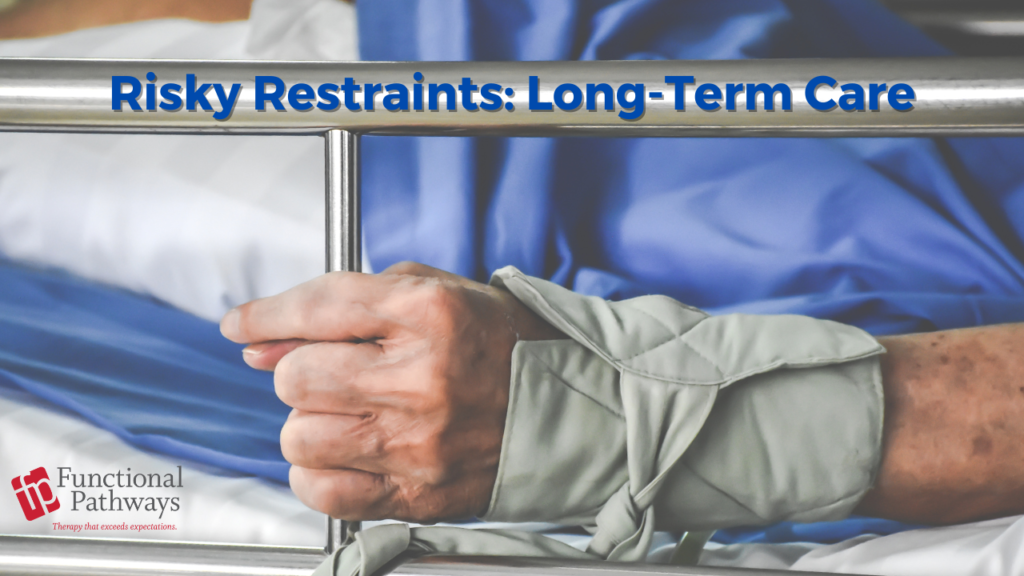
When alternative interventions are not effective, restraints are devices used to limit the client’s movement to prevent harm to themselves and others in a health care setting.
There are typically three forms of restraints used in a long-term care setting – physical, chemical, and environmental.
Physical restraints are equipment or material attached to the client to restrict voluntary body movement (i.e., arm/leg restraints, hand mitts, lap belts, bed rails, arm trays, wedge cushions, etc.).
Chemical restraints are psychopharmacologic agents used mainly to reduce agitation and violent behavior in clients (i.e., haloperidol and lorazepam).
Environmental restraints restrict the client’s access to all parts of their surroundings to reinforce boundaries, whether it is to items or certain activities.
Risks of Using Restraints
Although restraints are mostly seen as devices used to prevent self-harm and to those around the client, they have the potential to have the opposite effect.
In a long-term care setting, there are many clients diagnosed with neurological disorders, such as dementia, that inhibit proper thought process. Clients with dementia tend to wander and forget limitations. This can increase risk for falls, making fall prevention one of the main reasons for physical restraint use in facilities. Yes, physical restraints have prevented accidents, but they also can be contraindicative according to researchers. Delirium, muscle atrophy, pressure injuries, increased agitation and anxiety, and decreased mobility are a few significant risks of physical restraints. Unfortunately, there have been instances where accidental strangulation and other serious injury has occurred while the client attempted to get out of this form of restraint.
Due to the sedative effect of chemical restraints, clients can become withdrawn, depressed, agitated, hypotensive, and experience dysrhythmias. When given in excess, client’s respirations and heart rate can decelerate drastically resulting in death.
Out of the three forms of restraints commonly used in LTC facilities, environmental restraints can be considered the least risky. Instead of restricting the client’s ability to move their body, the environment is altered to keep the client safe. For example, locking away items that can be harmful. This doesn’t stop the client from moving about if able but keeps the objects or situations that cause harm away. Although it is the least restrictive, there are still risks associated with environmental restraints. The client could feel a loss in autonomy and dignity, resulting in emotional trauma.
Alternatives
Here is a list of some alternatives to the restraints discussed above:
- Build trusting relationships with clients.
- Give tools to staff to deescalate incidents where clients are agitated or combative.
- Provide dementia management strategies for all staff.
- Ensure you are staging clients with dementia to establish appropriate interventions and communication approaches.
- Staff units properly to enable timely responses to clients’ needs and supervision.
- Ensure client’s surroundings are free from hazards – clear clutter and clean up spills.
- Work with interdisciplinary team to evaluate and treat mental health concerns appropriately.
- Provide safe area (and equipment if needed) to walk/roll around.
- Consult your therapy team to evaluate client status and changes
Remember: There may be instances where restraint use is inevitable after all other alternatives have failed. However, it should never be used for staff convenience.
